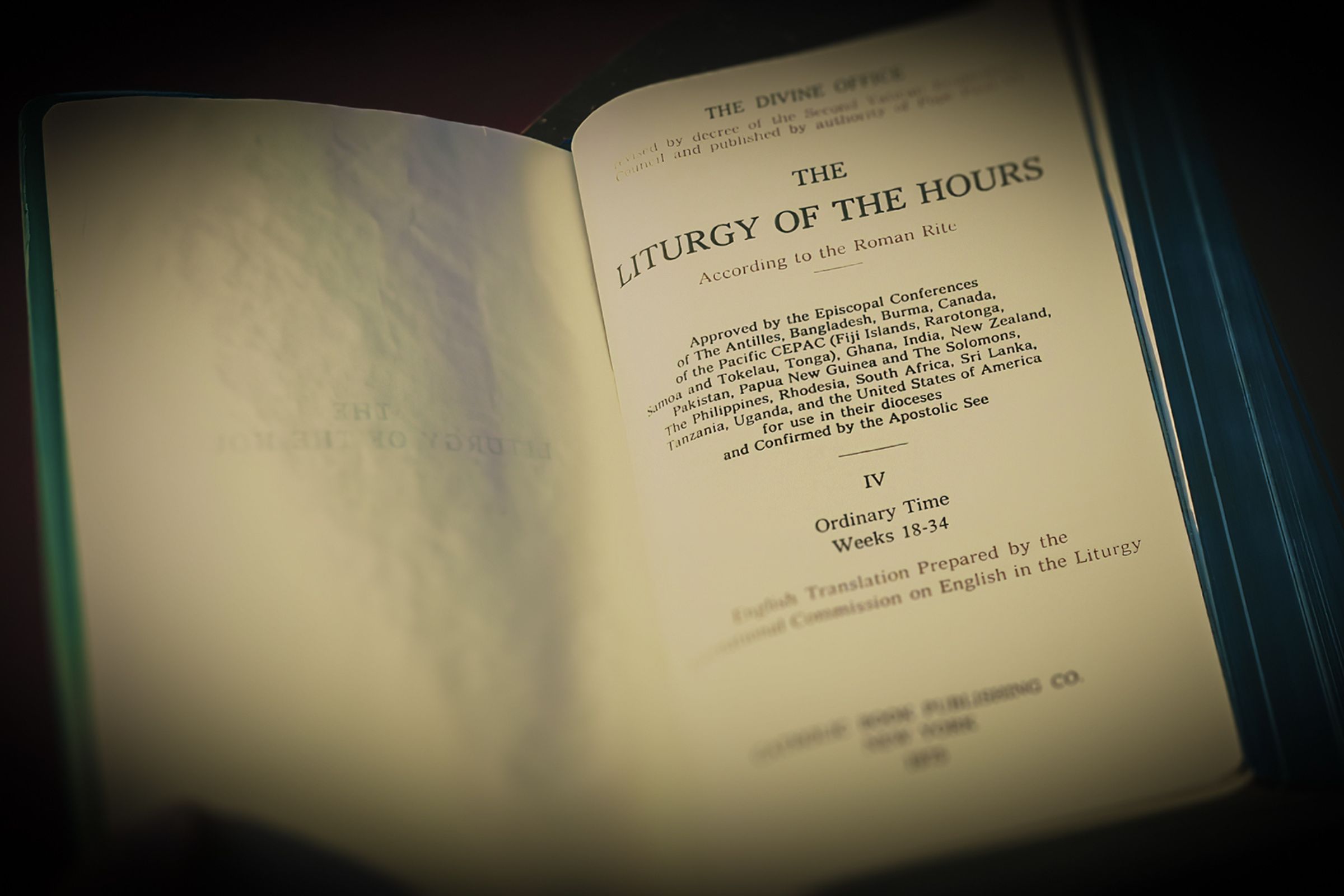

Traditionally prayed by priests and religious, the Divine Office (or Liturgy of the Hours) has been growing in popularity among the laity. Its monastic rhythm, foundation in Scripture, and universality place it alongside the Rosary as one of the Church’s most beloved prayers.
The Catechism of the Catholic Church beautifully describes the Divine Office as “the voice of the Bride herself addressed to her Bridegroom…. the very prayer which Christ himself together with his Body addresses the Father” (CCC 1174).
So, what exactly is the Divine Office, where did it come from, and how can we pray it today? Let’s explore the answers to these questions.
The Divine Office has deep roots in salvation history. Its foundation lies in the Jewish tradition of praying the Psalms at specific hours of the day. The first Christians continued this practice in the early Church; Acts 3:1 references the Apostles Peter and John going to the Temple for “ninth hour” of prayer.
In the 6th century, St. Benedict structured monastic life around eight daily hours that covered the entire Psalter in a week. This led to the canonical hours that still shape the Divine Office today.
St. Francis revised this rhythm in the 13th century, simplifying it for friars who were traveling preachers. Finally, the Second Vatican Council revised the schedule so that all 150 Psalms could be prayed over the course of a month, making the Divine Office more accessible for the laity.

The Divine Office is made up of many different “hours.” These aren’t 60-minute periods of time but rather moments of the day dedicated to prayer. The five main hours are:
While only priests (and seminarians in the process of becoming priests) are obligated to pray all the hours daily, deacons and religious also pray many of them. Due to work and family obligations, laity often choose to pray just one or two of the hours, such as Morning Prayer and Evening Prayer.
Each hour of the Divine Office follows a similar pattern, though with unique texts for the time of day. Throughout the course of the day, the hours will include:
This rhythm of psalms, readings, hymns, and prayers allows Catholics to join in the same words prayed by the universal Church across time zones and continents.

Praying the Divine Office may seem intimidating at first, but it’s more accessible than you might think. Many laity use one of the following tools for their prayer:
CatholicTV airs the following hours of the Divine Office:
Morning Prayer: 9am ET
Evening Prayer: 7:30pm ET
Night Prayer: 11pm ET
As Bishop Reed prays the office aloud, you can follow along with the words on the screen—no breviary or app needed! Streaming options are available on our website and through most smart TV apps, so you can pray at home or on the go.
While there are many beautiful and powerful prayers within the Catholic tradition, the Divine Office holds a unique place as the “public prayer of the Church.” Every time you pray it—by yourself, with your family, or in a group setting—you are praying with the entire Body of Christ (CCC 1174–1175).
Whether you only pray Night Prayer before bed or grow into praying several hours throughout the day, the Divine Office has the power to transform your everyday routine into a rhythm of grace.
If you’re looking for a way to deepen your prayer life, consider making the Divine Office part of your day. Start small—perhaps with Morning Prayer or Night Prayer—and discover how praying with the Church can draw you closer to Christ.
And remember, you don’t have to do it alone. Join Bishop Reed and the CatholicTV family as we pray the Divine Office together. You’ll discover that sanctifying the hours truly makes every day a love offering to God.